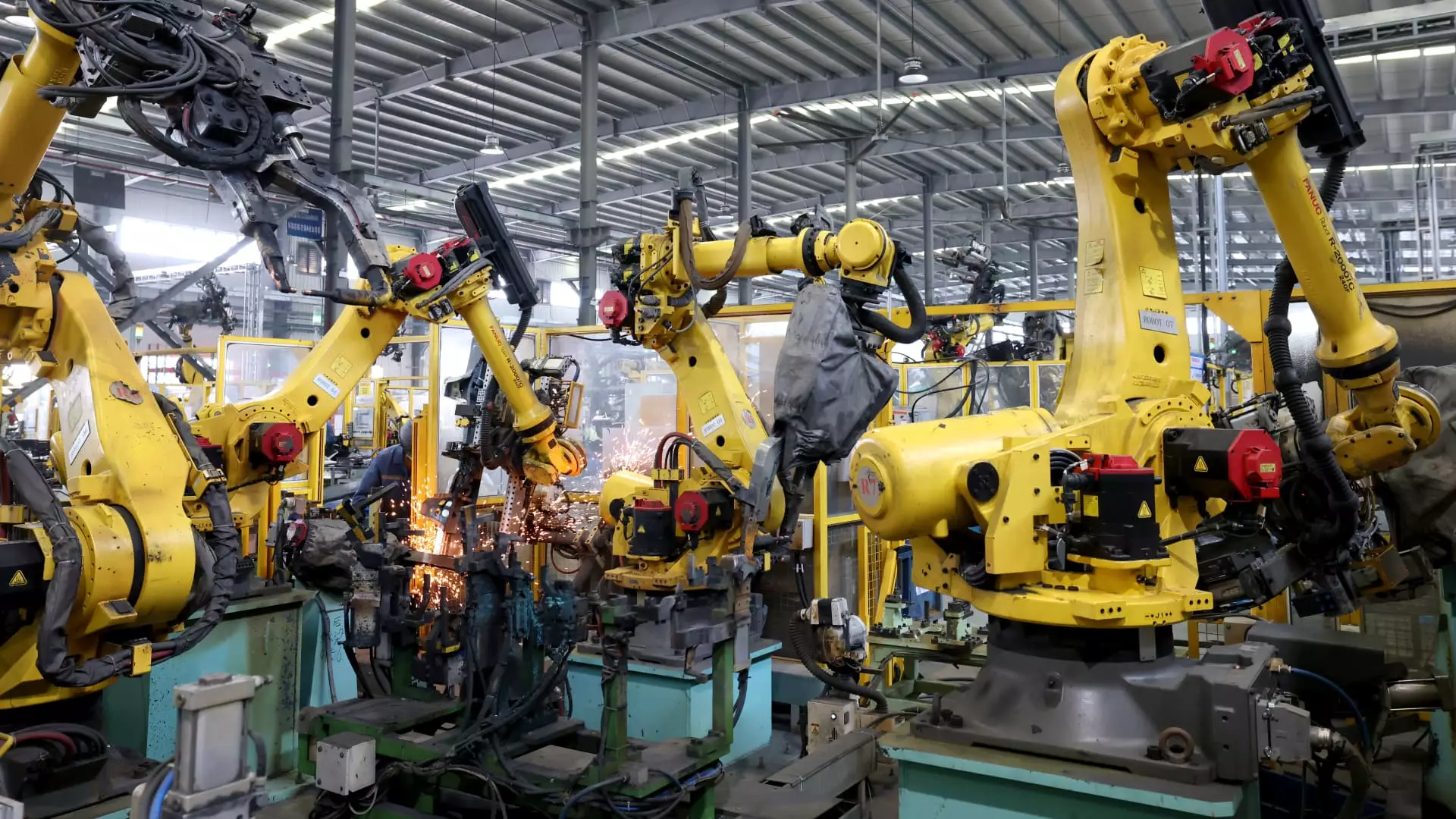China’s recent economic performance has showcased signs of improvement, as evidenced by the official Purchasing Managers’ Index (PMI) for October, which has notably elevated to 50.1. This figure indicates a shift towards expansion for the first time since April. Market analysts had predicted a more conservative reading of 49.9, making the actual figure a surprising yet welcome development for both policymakers and investors. The comparative data from September, where the PMI stood at 49.8, further highlights this unexpected leap.
The PMI serves as a critical barometer for private sector activity, with a reading above 50 signifying growth and below indicating contraction. October’s findings provide a glimmer of hope, echoing the sentiment held by analysts such as Zhiwei Zhang from Pinpoint Asset Management. He posits a modest improvement in economic momentum as the fourth quarter unfolds, attributing this to anticipated loosening of monetary and fiscal policies.
China’s impending parliamentary gathering set for November 8 is poised to unveil pivotal details concerning fiscal stimulus measures. This development is crucially timed, as it follows previous announcements aimed at solidifying economic growth. The enhancement of production as indicated by the sub-index, which recorded a promising 52 for October, signals a potential uptick in manufacturing activity, while new orders align closely with the neutral mark at 50.
However, the reserve inventory of raw materials remains a concern, descending to 48.2—remaining in contraction territory alongside employment figures clocking in at 48.4, though showing a slight improvement. These statistics call attention to the fragilities that continue to beset the recovery process, suggesting that while expansion is commencing, significant challenges lay ahead.
The non-manufacturing PMI also reflected slight recovery, rising to 50.2 in October, but it underscores a general unevenness across sectors. Notably, employment within this domain saw a meager increase, reaching 45.8—still indicating contraction. Concomitantly, findings from the U.S.-based China Beige Book reveal improved manufacturing output and new orders, both domestically and for exports. These amplifying opportunities resonate well with the broader objectives set by the government to rejuvenate economic vigor and employment prospects.
Despite these optimistic indicators, China’s economic growth trajectory remains intricate, hindered by sluggish domestic demand and persistent challenges within the real estate sector. Exports, contrastingly, have remained a beacon of resilience in the face of global economic uncertainties. The recent stock market rally, bolstered by high-profile stimulus announcements, reflects investor confidence in the government’s capacity to navigate through these testing times.
As China steers through the complexities of its economic landscape, the upcoming weeks will be critical in determining the sustainability of this newfound momentum. Policymakers must closely monitor these indicators to ensure that recovery translates into enduring growth. While the recent PMI improvements signal a potential turnaround, the multifaceted challenges ahead will require strategic foresight and adaptive measures to harness the full potential of China’s economy in the months to come.


Leave a Reply